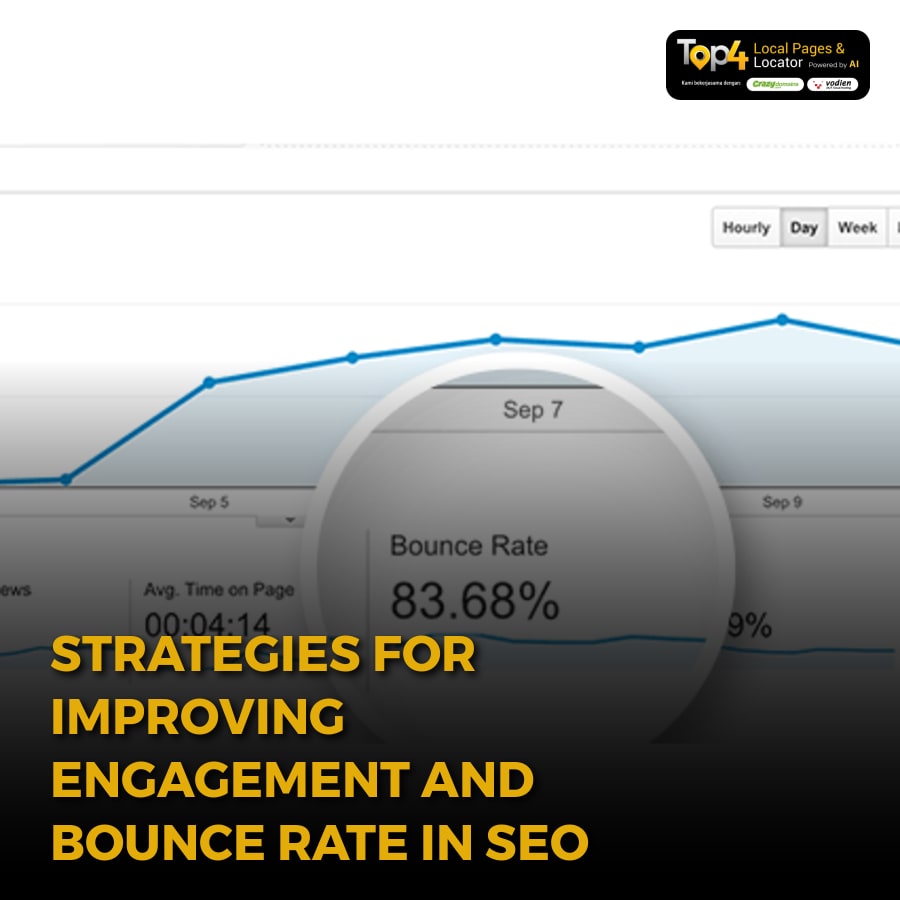Is your website's bounce rate worrying you? As a local business or franchise owner, you might find yourself pondering whether this metric holds the key to your online success. A high bounce rate can threaten to undermine your efforts, seemingly sending a clear signal that browsers are flying away as fast as they arrive. But what does this mean for your SEO strategy? Before you make any assumptions, let us dive into the subject and understand the balance and impact of bounce rates on SEO performance.
Understanding how visitors engage with your website and the reasons behind their actions is instrumental in crafting a sound digital marketing strategy. A high bounce rate could be a red flag highlighting potential areas for improvement, but it could also be misunderstood. With your online presence at stake, navigating this digital landscape with knowledge and precision is non-negotiable. This article will debunk myths and provide insights into how a high bounce rate interacts with your SEO efforts, offering actionable strategies to ensure your online platform is engaging, efficient, and optimally tuned for search engines.
What is Bounce Rate and How is it Measured?
The bounce rate is a metric that represents the percentage of visitors who land on a page of your website and then leave without visiting any other pages. In simpler terms, these visitors 'bounce' away after only a brief encounter with your content. Understanding this metric and how it is calculated by analytics tools is fundamental for assessing visitor engagement.
Typically measured by tools such as Google Analytics, the bounce rate is calculated by dividing the number of single-page sessions by the total number of sessions on your site. This gives a percentage that reflects user interaction levels. However, it's important to note that a high bounce rate isn't intrinsically negative; factors such as the nature of your site, the type of content, and user intent all play significant roles in interpretation.
Analysing Whether a High Bounce Rate is Bad for SEO
Many business owners immediately associate a high bounce rate with poor SEO performance. It stands to reason that if users leave swiftly, the site must be lacking in some capacity. However, a high bounce rate does not automatically hurt SEO. Search engines like Google employ complex algorithms that examine a multitude of factors beyond just bounce rate to determine a website’s ranking.
It’s crucial to consider user intent. If your site successfully provides the answer a user is looking for on the first page, the visitor may leave satisfied, reflecting a high bounce rate yet a positive user experience. Thus, context matters greatly. A well-constructed SEO strategy will balance content relevance, site usability, and engagement in a manner that serves your visitor’s needs while still promoting search engine optimisation.
Revamping Your Website for Better Bounce Rates
To manage a high bounce rate, it’s pivotal to concentrate on website improvements that encourage deeper user interaction. Here are some effective strategies that could lead to positive outcomes:
- Improve Page Load Speed: Slow-loading pages are a major cause of bounce. Optimise images, enable browser caching, and consider a Content Delivery Network (CDN) to accelerate site speed.
- Ensure Mobile-Friendliness: With a significant portion of web traffic coming from mobile devices, ensure your site is responsive to different screen sizes for an optimal user experience.
- Craft Engaging Content: Your website content should be relevant, compelling, and value-oriented. Engaging headlines and straightforward text can keep visitors interested and lead them to explore further.
- Clear Calls to Action: Guide visitors with clear calls to action that direct them to more content, such as related articles, product pages, or contact forms.
Measuring Success: Beyond Bounce Rate
Improvement does not stop at reducing bounce rates. While it is a useful metric, it should be one of many indicators used to measure your site’s success. Evaluate other metrics such as average session duration, pages per session, and conversion rates to paint a comprehensive picture of user engagement and site effectiveness.
Additionally, consider user feedback and conduct A/B testing to gauge which elements on your site most resonate with visitors. Continual assessment and adaptation are essential in keeping your strategy aligned with evolving user behaviours and search engine algorithms.
Conclusion
In conclusion, a high bounce rate should not immediately spark concern about your SEO health. Instead, it should serve as a guide to potential areas for improvement, helping you refine a strategy that attracts, engages, and retains visitors. By understanding the interplay between bounce rate and SEO, and employing targeted strategies to enhance user experience, you foster an inviting online environment.
At Top4 Marketing, our expertise can help you craft a local marketing plan that aligns with your business goals and local community needs. Let us assist you in maximising your online strategy. Visit Top4 Marketing blog for more insights to elevate your business to new heights. Contact us today and start your journey towards local marketing success.


 SAUDI ARABIA
SAUDI ARABIA

























